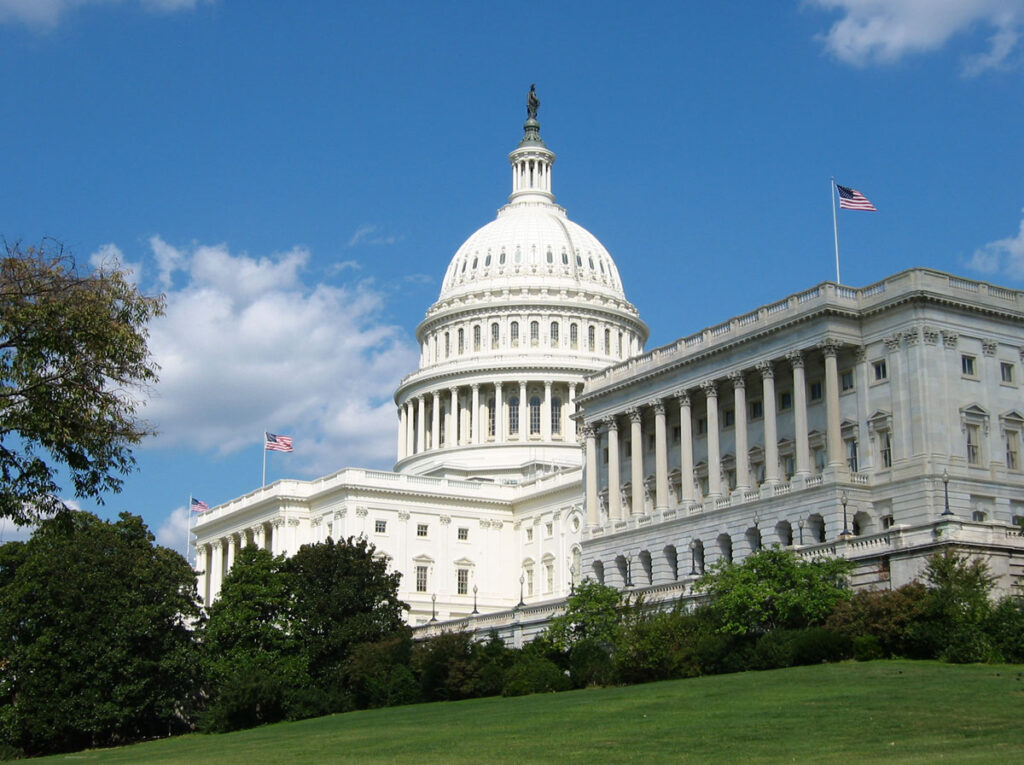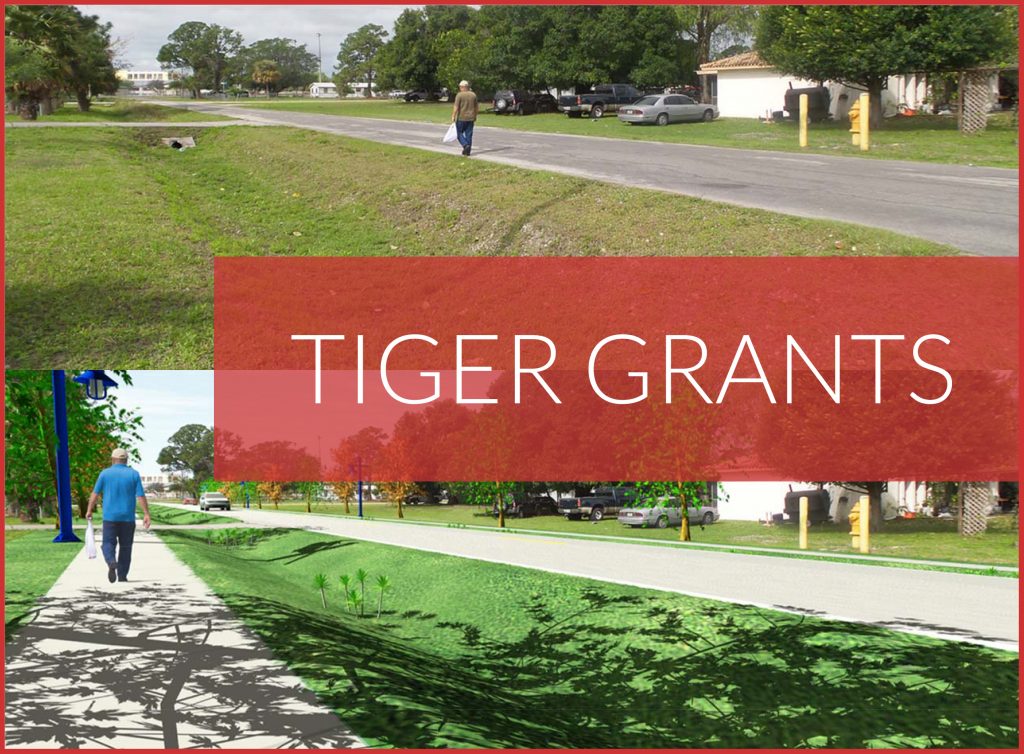
TIGER grants focus on rural areas, recognize the value of complete streets, and ignore transit

Just a month after the Trump administration proposed a budget that would eliminate the competitive TIGER grant program entirely next year, the US Department of Transportation announced the winners of this year’s awards. This year’s winners show a clear shift in priorities — this round is decidedly rural or small town in nature and nearly devoid of transit projects. However, the winners also show that this administration recognizes how smaller-scale complete streets projects bring tremendous value to local communities.

The fiercely competitive but notably small TIGER grant program is one of the few ways that local communities of almost any size can directly receive federal dollars for their priority transportation projects. The federal government has found a smart way to use a small amount of money to incentivize the best projects possible and encourage local investment: TIGER projects brought 3.5 other dollars to the table for each federal dollar awarded through the first five rounds. They’re overwhelmingly multimodal and multi-jurisdictional projects—like rail connections to ports, complete streets, passenger rail, and freight improvements—that are often challenging to fund through the traditional, narrow transportation formula programs.
This intense competition for funds stands in stark contrast to the majority of all federal transportation dollars that are awarded via formulas to ensure that all states or metro areas get a share, regardless of how they’re going to spend those dollars. And unlike the old system of congressional earmarks, the projects vying for funding compete against each other on their merits to ensure that each dollar is spent in the most effective way possible.
As we look through this year’s list of awardees—the ninth group of winners since the program was created in the stimulus package of 2009—five clear themes rise to the top. Here’s what you need to know about this year’s TIGER winners and the status of this valuable program.
#1 Reminder: this could be the last of the TIGER program
Though it’s one of the most fiscally responsible transportation programs administered by USDOT and incredibly small when compared to the overall transportation program, the administration’s budget request for next year completely eliminates TIGER. While the Senate has stepped in to save this program numerous times, they’ll only continue to act if the local leaders who depend on it continue to speak up.
Whatever the pros and cons of the winners, as outlined below, local officials across the country depend on this program to invest in ways that traditional state or federal programs either don’t allow or make too difficult. Once again, this round is full of projects that would have been unlikely to receive funding under the traditional program either due to the project type or project sponsor.
#2 The administration rewards the growing local support for complete streets and main street revitalization
If there’s a clear winner in this round of awardees, it’s for projects that are focused on revitalizing main streets, improving pedestrian safety and access to transportation options, and building a better street framework for creating and capturing value. Projects in Carson City, NV; Immokalee, FL (pictured in graphic above); Burlington, IA, Akron, OH; Frankfort, KY; and Mill City, OR, among a few others, all have a strong complete streets or bicycle and pedestrian component. The administration is to be commended for seeing the connection between investing in traditional, people-focused streets and downtowns as not only a viable economic development strategy, but a vital one.
But the administration can’t choose these projects if they’re not in the applicant pool. And the proliferation of these projects is a testament to the growing movement of local officials who understand that improving safety through low-cost interventions, building a sense of place, investing (or reinvesting) in downtown, and focusing on moving people rather than just vehicles brings a strong economic payoff to their communities. Because of that, they’re investing their own dollars heavily in these projects and the administration is making a wise investment by partnering with them.
#3 More funding for rural projects, but with a loose definition of “rural”
While USDOT says that over 60 percent of the awards go toward rural projects—a stated goal of the Trump administration—it’s probably more accurate to say that most of this funding goes to midsized cities. (They count places like Lincoln, NE—pop. 280,000—as rural.) There was also a clear bias in favor of awarding funds to projects in states that are in the middle of the pack in population, and the most populated states that produce an outsize share of the country’s GDP mostly received very low dollar awards—states like California, New York, Texas, and Illinois.
While funding more “rural” projects is a stated goal of the administration, it’s hard to square with the administration’s current plans to make towns and cities and states pick up more of the funding burden. Rural projects usually bring less local or state money to the table, by DOT’s own admission: “Since 2009, the TIGER program has awarded nearly $1.4 billion in federal funding to 171 rural projects across the nation, leveraging an estimated $2.5 billion in non-TIGER funding,” lower than the 3.5 non-federal dollars per TIGER dollar for all projects through the first five rounds. In an ironic twist, these smaller places (and midsized cities, as noted) will be the ones most intensely feeling the squeeze if the administration gets their way on federal transportation funding.
#4 Awards for transit projects were few, keeping with the administration’s overall views on transit
The underlying law’s language (found in the 2017 appropriations bill) requires some level of parity between various modes of transportation:
“…the Secretary shall take such measures so as to ensure an equitable geographic distribution of funds, an appropriate balance in addressing the needs of urban and rural areas, and the investment in a variety of transportation modes”
Contrary to that language in the law, this batch of TIGER grants only includes a few smaller transit projects, leaving out both the quantity and size of larger transit investments we’ve seen in many past rounds. Though it’s not in step with the intention of the program as crafted by lawmakers, it’s certainly hand-in-glove with the administration’s stated belief that localities should fund transit investments all by themselves. The administration has already pledged to end the capital program for building new transit lines or stations, and these awardees largely reflect that view.
#5 The tradeoff for a project in almost every state is the lack of nationally significant projects
It’s nearly impossible to make an award in almost every state while also funding a handful of larger, transformative, nationally significant projects—projects like the CREATE program (rounds I and IV) to address huge national freight rail bottlenecks in Chicago or the Crenshaw/LAX Light Rail project. This has been a struggle for the TIGER program dating back well into the Obama administration, but this is the tradeoff that comes with trying to get an award for nearly everyone: more smaller awards, and less capacity to invest in big nationally significant projects that have benefits for people far outside of a single city, region or state.
TIGER should represent a way forward
The majority of all federal transportation dollars today are awarded to states and metro areas in a way to ensure everyone gets a share, regardless of how they’re going to spend those dollars or how well-conceived their projects are. TIGER operates differently, forcing projects to compete against each other on the merits. Rather than being slated for elimination, this should be a model for the future of transportation funding: formula dollars awarded for repair and maintenance, and then money for any new capacity (of any type) awarded competitively.
Will Congress acquiesce to the administration’s demands to eliminate TIGER? In spite of the administration’s stated opposition to this program, they just funded 41 important projects that would have been difficult to build under the regular program. As stated above, Congress will only continue defending this program as long as local leaders and advocates continue pressing for its survival. Get in touch with your representatives today and urge them to continue supporting this small but vital program.



